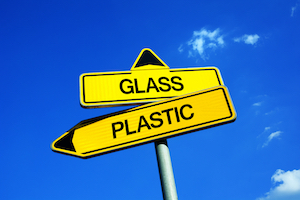
Is glass a better alternative for food and beverage packaging than PET? That is the focus of a new study from IHS Markit (London). As plastic has become more widely used for food and beverage products over the past few decades, it has provided some benefits that glass does not. However, with consumer perception of plastic changing in a negative way, glass is beginning to challenge plastic as a material of choice.
PET packaging has several advantages over glass, which has contributed to its popularity, noted the IHS Markit case study. PET packaging is generally much lighter than glass, reducing the cost of packaging and the CO2 footprint of transporting products. Raw material costs and the cost of production processes for PET are also lower than glass on a per unit basis, giving it a further cost advantage, said IHS Markit.
PET can also be combined with other plastics in packaging materials to give it different properties and, in some cases, lower the overall packaging weight. Plastic as a packaging material continues to be preferred over glass, accounting for 26% of the world’s plastic output, according to IHS Markit. The alcoholic beverage sector remains the one niche where glass remains king. “Glass offers lower permeability to O2 and CO2 than plastic, which means alcohol can be stored longer,” said the case study. In the soft drinks sector, this is less of an issue. With the obvious cost advantage, PET has become the dominant packaging material in that sector.
FOR MORE SEE: https://www.plasticstoday.com/packaging/glass-or-plastic-study-profiles-changing-consumer-attitudes/188152184759378